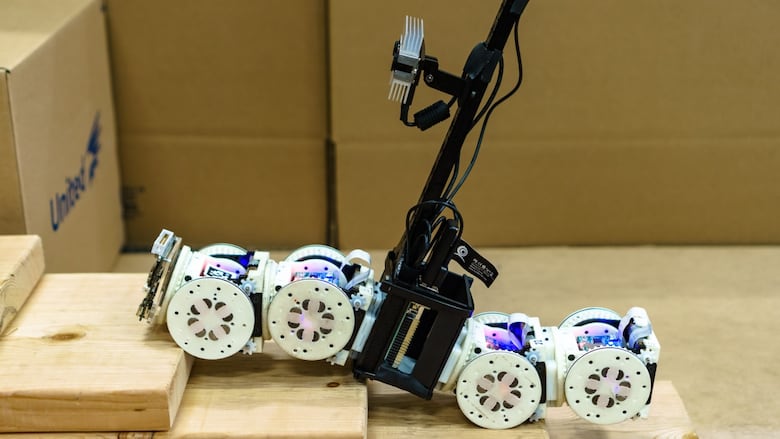A step towards Optimus Prime — transforming robots can reshape themselves
The self-assembling robot can assume different forms for different tasks

A group of robotics researchers in the United States have developed a modular robot made of small, cubic segments, that can assemble its modules in different ways to perform different tasks from rolling across floors to climbing stairs.
When we talk about the future of robotics, the shape-shifting robots in movies like Transformers seem really far fetched compared to our actual robots that can walk like dogs, vacuum our floors, or serve sushi in restaurants. But all autonomous shape-shifting robots of the future have to start somewhere. And that somewhere was unveiled this week.
This new robot system is called SMORES, which stands for Self-assembling MOdular Robot for Extreme Shapeshifting. It was developed by a team of scientists and engineers from Cornell University and the University of Pennsylvannia.
This new robotic system can operate autonomously and transform itself into different shapes, so it can work many different types of environments. It can drive, roll, probe into tight spaces, or snake itself upstairs like an inchworm when completing a pre-assigned task in an unknown environment.
Secret to shape-shifting is its modular components
"It's a system composed of a bunch of repeated robot elements that we call modules," said Tarik Tosun who worked on the project as part of his PhD in Mechanical Engineering and Applied Mechanics at the University of Pennsylvania. "What really distinguishes them from other robots is they can connect together to other modules to form different shapes that have different capabilities."
What really distinguishes them from other robots is they can connect together to other modules to form different shapes that have different capabilities.- Dr. Tarik Tosun, University of Pennsylvania
Each module has two wheels, so it can drive on its own. They also have an array of electropermanent magnets on four sides of each cubed shape module. Those allow the modules to connect with one another with a simple pulse of electricity.

The SMORES robot also has a single sensor module, which Tosun said, "is like the brain of the cluster." It's long and skinny, unlike the cubed shaped individual SMORES modules, and it has two cameras on it. One camera faces forward to map the area in front of it and gather information about its surroundings. The other camera looks downward to watch the cluster of modules below to track their positions during reconfiguration.
Not yet ready for prime time
The new study published this week in the journal Science Robotics described a few experiments the researchers did with it to test out its function. It passed with flying colours, but that doesn't mean it's yet ready to deploy in a search and rescue mission.
The way the robot is actually making decisions about what shape and what behaviour is appropriate for each task that it encounters is by taking advantage of a design library that we've developed for the robot.- Dr. Tarik Tosun University of Pennsylvania
One limitation the current system has is how it makes decisions.
"The way the robot is actually making decisions about what shape and what behaviour is appropriate for each task that it encounters is by taking advantage of a design library that we've developed for the robot."
Elements in the library are configurations or shapes for the robot and associated behaviours, which now all need to be programmed in. Tosun said he thinks machine learning artificial intelligence could come in handy in future systems so it can learn how to deal with new challenges by itself.
He also said the hardware is still very much a research platform. "As of right now, the robots are able to drive well on flat surfaces — the kind you might find indoors," said Tosun. It's not currently able to work outdoors in a dirty environment on an uneven terrain.
"But this demonstration shows that this reconfiguration capability is a viable strategy that we can use for robots to address tasks. And I think this paper provides good inspiration to create future systems that are bigger, more powerful, and more capable."